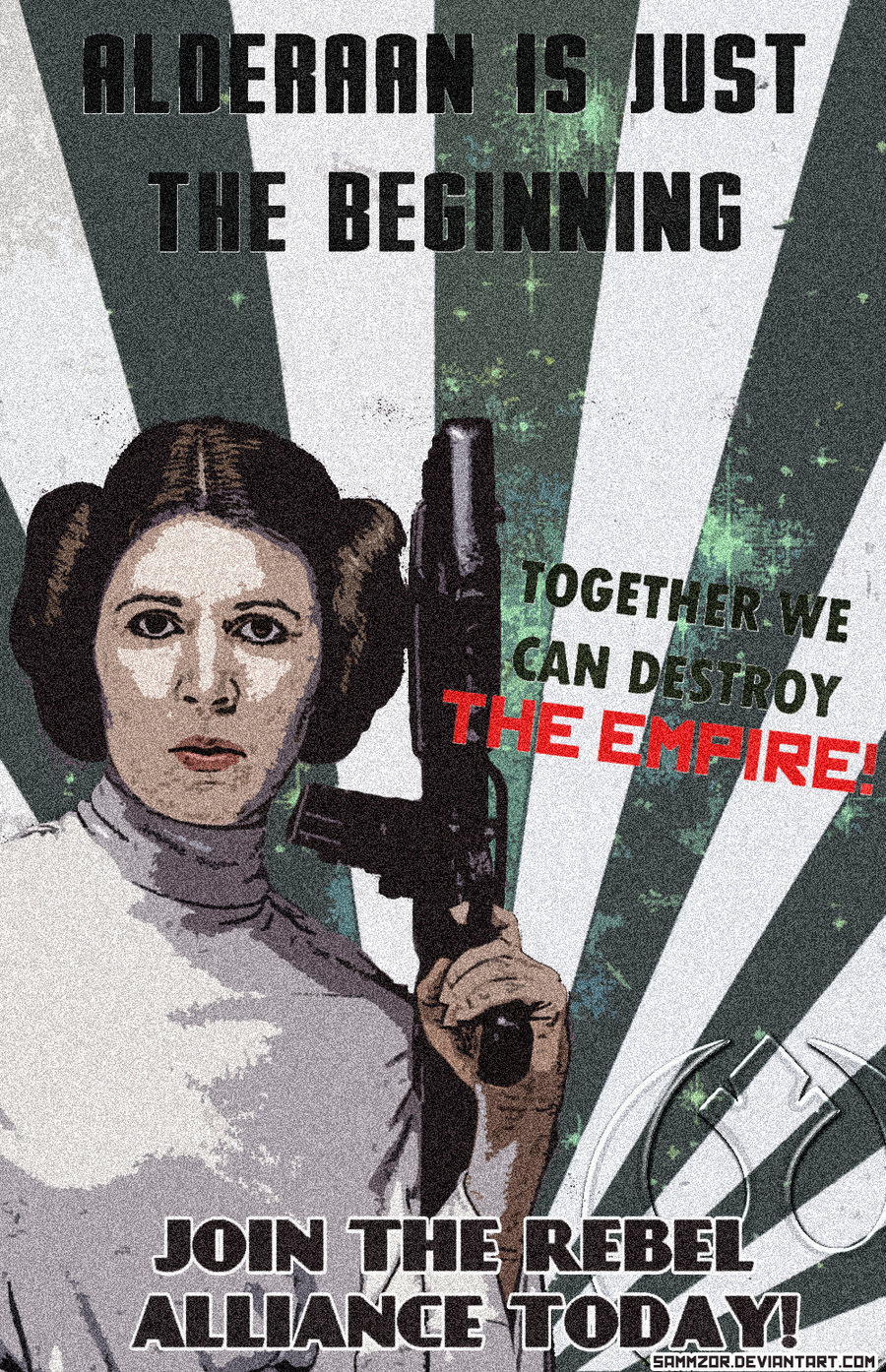Earlier this week, I wrote about gradients of conflict in storyworlds, and how just because two entities are on the same side of a conflict, it doesn’t mean they’re both in agreement, or equally invested in the conflict.
Before declaring this horse dead and moving on, I wanted to give some concrete examples of what I’m talking about. And because I’m lazy, I’m turning once more to the lovable terrorists and authoritarians of Star Wars to do so.
Leia: At one end of the rebel spectrum is the extremist, the one who will abandon her comfort zone to put her life on the line in support of the cause. (Yes, she had wealth and power to work with, but do you really think she would have let a little thing like being a moisture farmer on the far side of the galaxy stop her from joining the Rebellion?)
Luke: In the middle of the spectrum is the guy who’s generally opposed to the opposition, but won’t turn those words into deeds unless give no choice, or a fantastic opportunity to do so.
Han: At the other end of the spectrum is the one who’s only in the conflict for external reasons. In Han’s case, it’s his personal need for money, but it could just as easily be family commitments, a personal vendetta, or a lost bet. (These folks are interesting from a storyworld point of view because they give us a glimpse into the world beyond the core conflict.)
Boba Fett: Boba is pretty much in the same spot as Han: supporting the Empire, but only so long as there’s a paycheck in it for him. In fact, I wouldn’t be surprised to learn the Han and Boba actually worked together at some point, working for neither side of the conflict. (No, I won’t look it up. You look it up and let me know in the comments what you find.)
Darth Vader: Like father, like son. (Oh, sorry. SPOILERS.) Vader’s committed to his side of the conflict as long as it’s easy. But when faced with the right opposition, he becomes conflicted and slides down the conflict spectrum.
Emperor Palpatine: And then you have the one who is so invested in his side of the conflict, he’s pretty much an embodiment of it.
As you can see, different gradients of conflict let us tell different stories. While Han and Leia are on the same side, you can tell Han stories that would never work for Leia, and vice versa. And in the end, that’s the point of this exercise: to help us tell more stories with our storyworlds.


